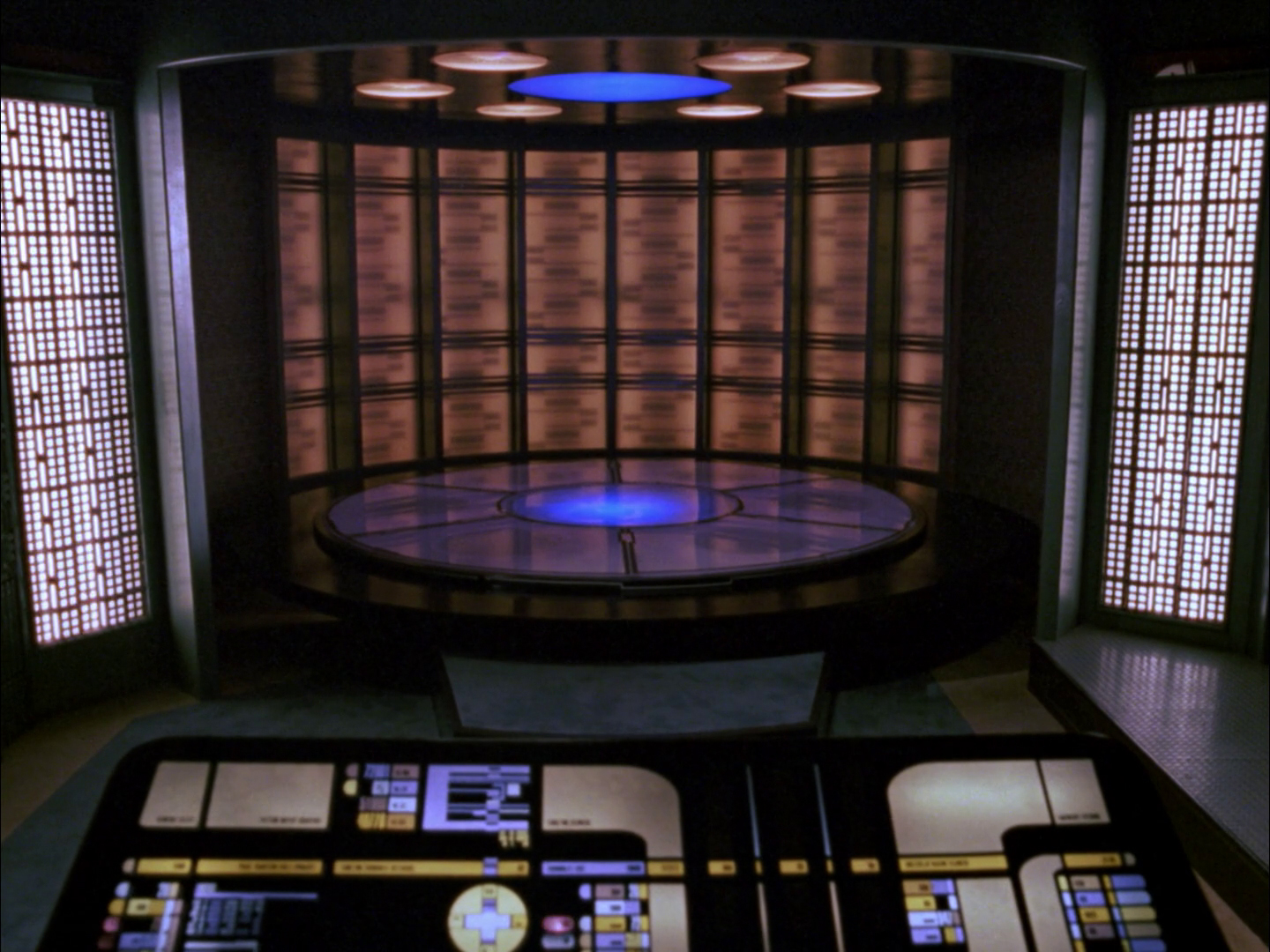That massive spike of 50c/kWh at the left looks tiny compared to today even though that’s already insanely expensive
RIP to those running a 4090 on their rig.
I get the joke, but in contrast to heating, you can easily just… not run demanding games while the electricity is insanely expensive for a day.
It would literally not matter since it all ends up as heat in the end which is what you’re looking for anyway
Minus 5 watts on the three fans or something
My Pc is a good 500W heater with an attached entertainment generator.
Playing Frostpunk and my PC is literally the generator.
Man, I need to return to that game.
But it’s so stressful. Like the main scenario I tried to save everybody, then the game throws 43 children my way… I have to admit, took three minutes to decide what to do.
It’s very pretty, and the loop is great, I love management games, but this one just hits differently.
I got it through a giveaway and when I was going to start playing, my cat died and it was just too heavy for me at that frame of mind.
It’s been a couple of years now, though. I should give it another go.
Agreed. Visually beautiful and morally hard. So difficult to save everyone but I loved it.
That’s the beauty: you have to make the tough choices for the greater good and future of the town. I’ve been playing a dozen hours a week for a few months and finally have somewhat of a feel for how to start building the town at the beginning so it doesn’t screw me over later.
I initially didn’t like it when I got it for free on Epic, now it’s one of my favorite games.
I bought it, because I saw some recommendations. I even played some on my Steam Deck.
But the PC experience is the best, though I moved to OpenTTD after the first scenario.
deleted by creator
Assuming you meant heat and not hear. Upgrading your cooling should not lower the total heat output of your PC (it’s more likely to increase it). The only exception is if you somehow send the heat out of the room, but that would be a crazy complicated setup. Your PC always turn the same amount of electric energy into heat energy and dissipate it in the room. if it’s more efficient it will cool down the components more, possibly giving them the opportunity to increase frequency further, which increase the power draw, which is turn into more heat that is dissipated in the room.
The electricity from the fans also ends up as heat.
Hot damn, that’s true
The hot from the damn also ends up as heat.
Cool!
No. Hot.
Even if it’s 97% efficient, a heat pump can still easily beat it.
True that
I wish heatpumps ran factorio 😔
More like 99.99% the only electricity coming into the PC and not heating the house is the very small amount of light and sound leaving the house. Still worse than a heat pump, but pretty efficient at heating.
What about the fans?
Their waste is heat. They might waste some energy by sending air out of the house, but any energy they impart on air eventually becomes heat
EVs are finally starting to use heat pumps for heating and cooling their batteries (and cabin climate), I wonder how long before that’s available for PCs? Just need a little hole saw to get an evaporator/condenser outside.
But running the 4090 would keep your cottage warm.
Nah, it’ll keep the house warm!
I kept the main room of my condo warm for a winter by having two rigs running 24/7 while I didn’t have a baseboard because I was doing renovations!
Imagine the OC potential at those low room temps!
50 Euros a day is insane. That’s a good portion of what I pay for a whole month.
Part of it was faulty pricing from a Norwegian electricity exporter. Also, they have almost finished the new infrastructure, so they do not have to import as much in crisis situations. I think a new nuclear power plant goes online and lots of renewable stuff. The problem OP is maybe talking about seems to be very well handled by the state and already solved. https://www.helsinkitimes.fi/finland/finland-news/domestic/24708-electricity-prices-in-finland-return-to-normal-levels-in-2023-down-64-from-previous-year.html
Lucky you. 175 square meters, 25cm styrofoam on walls and 30cm rock wool on ceiling and I pay 200€ per month in winter for gas heating in Poland. Solar panels are not economical in current regulations and billing rules have changed so those with heat pumps pay at least twice us much in coldest months.
We are fucked from every angle.
hey, whats the price for gas per cubic meter in Poland?
Invoice from yesterday for December 2023. I used 201 m3 of gas, calculated by provider as being equal to 2224kWh of power for which I paid 682.81 PLN (157 € to be exact) in total including taxes and surcharges. So 3.397 PLN or around 0.78 EUR per m3.
December was one of the coldest months this season. Last year I used maximum of 250 m3 per month which happened to be January/February. This then exceeded 200€
This includes both warm water and heating using low-temperature floor heating. Current thermostat settings give me 22C on the base floor and 20C on the first floor (where most heat escapes, obviously). I also have mechanical ventilation with recuperation.
Shit’s expensive.
With current prices of electricity, the same heating power with perfect constant COP of 3 (not possible with December temps for air heat pump) would cost me 666 PLN. (Nice). How can I offset the cost of installing it in the first place LOL.
i hear you, current rate in Lithuania is 0.87 eur :(
Get a space heater.
Mine was $15 at Walmart, heats my room like it’s Spring, and only adds $5 per month to my electricity bill.
Come Summer, I’m going to get a dehumidifier and see if I can use it in place of my A/C.
Bruh, a space heater is the least efficient way to heat a space, unless electricity somehow costs less per MWh than gas (that is insanely cheap and only true in a few key places in the world).
Also dehumidifiers… don’t do what you think they do? They are basically an A/C unit, that dump the hot air in the room they sit in. Literally worse than nothing.
*Re-*humidifiers have marginal benefits in (very) dry weather as evaporation is endothermic. As soon as the air is even somewhat humid though, they’re literally worse than nothing again.It’s not inefficient if it makes you feel warm. Often you don’t really need to warm everything in a house to be comfortable. It might make sense to do so in a situation when electricity goes out/grid is unreliable and you don’t have a thermal battery to ride on for a few hours, or you want to keep your water pipes warm enough so they don’t freeze.
But I know a lot of people who choose to forego so much heating, keeping their space to like <15/59, and have a heated blanket or space heater/fireplace entertainment center.
Feel like this works best in a shared living situation though, like an apartment or town home. For detached situations, maybe it does make sense to keep things relatively warm in case of emergencies.
They were talking about consistently heating a whole room though. I guess there’s a case to be made if the thermostat for the central gas heating is in another room and can’t be moved… But you should probably organize your heating so that this is a corner case (which is why the thermostat is typically in the living room in detached living. Other rooms don’t usually need to be kept particularly warm).
Of course if you have a badly insulated house and no way to properly distribute the central heating or to pay to heat the whole space to 18 °C, use resistive if you must. But that goes against everything that central heating is supposed to be for.
Also you really should not let a building go under 15 °C. It depends on the specifics (insulation, ventilation), but you’re liable to get mold or other kinds of water damage due to condensation.
Good points. There are a variety of houses/buildings built during various periods of time according to various codes and standards, but if you’re within city limits (US/Canada) then your house was probably built after the 70s/80s and has decent insulation. If there is an issue with the central heating in that kind of home, I 100% agree that there’s an issue that you might want a GC to fix. If your house/building is old, or if landlords don’t want to fix shit (and complaints are too much of a hassle), then I can also see that space heating can be a reasonable bandaid: at least until you get out of that situation.
Condensation is something I also forgot. That’s important for you electrical system too. In my experience in electric distribution/collection, usually we’d want to keep termination points around 20/68, but thermostats could drop to as low as 10/50 before kicking in. Certainly keeping a house colder than 10/50 is a bad idea, but between that and normal 20/68 I’d think would be fine. You also have the risk though that your thermostat is a single point of measurement for the system. Other parts of a house might be cooler/warmer, so I’d agree with the advice to keeping your house warmer than 15/59, unless it supports multi-unit dwellings.
Good convo, cheers
wow! i paid 220euros for gas heating and warm water in 78m2 flat in poland for all last year.
Yeah I lived in flats before, it’s a totally different story, unless your flat is on the last floor or on the corner there is not much heat loss assuming your neighbors also use the heating.
not really… my flat is in corner. Gave 3 sides, nirth, east, and south. No other flatsconnected with mine. And to this, flat under mine is empty, nobody is living there.
Then I don’t know why, but I am sure over 30% of heat in my house escapes through the roof.
Many are going to pay 200€ today
I will never complain about paying 33¢/kWh for 3 hours a day in the summer ever again.
Tomorrow is back to normal. Even the 37c/kWh spike hardly registers on the graph compared to today even though that’s still pretty expensive.

Are you actually paying the daily spot price? Not a flat amount with the utility provider taking the hit? That’s how I know it from any other country, unless you have a specific contract where the user made an informed decision to opt for market rates.
Mainly the reason is that many countries do not have hourly capable meters, so calculating the price for each hour is not possible. Flat rate is needed when you just have the cumulative read once a month.
In Finland the meters communicate automatically once a day, and send the 24h values to grid company. The next generation meters which are now installed can communicate once a hour.
30% of Finns are on spot.
Oh interesting, never knew that’s a thing. Sounds mostly like a good development to make people more conscious about their consumption.
Sounds more like an incentive to put up solar panels and battery storage. Even if it isn’t enough to go off grid totally, you can at least store on cheap days.
Spot is quite normal in the Nordics. Over all it’s the cheapest, but some days suck obviously.
This summer we had days with negative prices. My bill for July was 78 NOK (about $8). Might have been August when I think about it…
Yeah about 30% of Finns have a plan lile that. It’s bit of an gamble, but on average it’ll be cheaper on the long run.
40c/kWh is a pretty normal price here in Germany…
Ironically, prices are high, because of too much extremely cheap renewables.
Bullshit. Check the prices around Christmas last year, Germany was running only on renewables on the 24th and I paid .19€/kWh all day long then.

Do you really think, that’s what anyone pays? Because that’s not how consumer contracts work. You’re paying whatever you agreed upon when signing the contract.
Source: https://www.stromauskunft.de/strompreise/
This was literally 10s of google. Is that so hard?
Yes, that’s what I pay. That’s what my contract works like.
And on average, you’ll pay just as much as everyone else. If prices go through the roof, you’ll get screwed. See 2022.
Nope. More than 80% of my usage comes from heating and driving and I’ve heavily optimized car charging and heat buffering to make use of low cost times.
Heating can only be optimized for about 24h periods, that’s why I can supplement my heating with wood from my own forest.
Driving, between April and October pretty much only happens using electricity from my own roof, between May and September the entire house uses less than 100kWh from the grid.
Before I signed at Tibber, I had of course compared my recorded load profiles including simulations for automated usage optimization against EPEX 60min day-ahead prices and I would have been at less than 0.23€/kWh on average since 2020, including the high prices of 2022.
Do most Finnish people pay spot prices for electricity?
About 30% do
Interesting.
At these temperatures, I can’t imagine air source heat pumps being very efficient.
I would probably have a spare gas, oil or wood based heater and use that for days like this, or for if the power goes off on days like this.
Older houses definitely have them… but there was this trend at some point to renavate older houses and remove the oil heaters and fireplaces and wood heated saunas, and replace everything with electric ones. Why? No idea, trends are weird.
Electricity is usually less polluting than the various fuels, wood fires especially will fill a valley with smoke, the rest are mostly to avoid the carbon dioxide
Carbon monoxide too… and chimney fires… don’t forget about indoor emissions with open stoves… Even if you don’t care about the environment, electric wins the health&safety race by a landslide. Forgetting to do the maintenance on a heat pump doesn’t exactly carry the same risks as with a wood stove.
Heat pumps are expensive and electricity can vary in price (who in their right mind opts in to spot pricing without on-site power generation tho, what the hell). Still, it’s not hard to see why everyone who can afford it is electrifying.
Also Russian fossil fuels
Newer models are actually.
We had negative 30 C the last two days and our air-to-air kept the whole upper floor comfortable. 90 m².Granted it’s a brand new and very well insulated house, but -30 bites well on those too!
Most houses up here have other electric alternatives or a fireplace.
Gas and oil are beyond abnormal to have and I think oil is even illegal in Norway now…
Don’t quote me on that thoughWow, air to air even?
But do you know what the COP is at -30?
I must make a small correction though: The last night with -30 it struggled a bit. Only managed to keep the upper floor at 19 °C so we had to turn on the cables to get over the peak.
I’m still mightily impressed by it though!
Max consumption was 32 kW/day, so roughly 4-5 € pr/day with our prices.
What about a solar + electric heating?
Well, here (in middle of finland) the sun set at 14:30, so there wasn’t all that much solar energy available.
Also heat pumps are always at least as efficient as straight electric heating.
It think above -20C or so, cold weather heat pumps are still way more efficient than resistive electric heating.
Good R-factor insulation is probably the most important upgrade in OP’s case. There are people where I live in the Northeast who heat their homes almost exclusively with the waste heat from cooking, electronics or old incandescent lighting. They have like R-30+ homes and really neat ventilation designs for cooling in the summer too.
I had plans to build a tiny home with Vacuum insulated panels and a small marine stove for heat, until we had a child and plans changed.
Now I’m looking at a solar battery setup with geothermal heat pump that will probably cost nearly what the whole tiny home was gonna be.
Solar is quite poor in Northern winters. Wind + solar + heat would be a better bet, but the battery required to heat your house for more than a day with low winds would be prohibitively expensive unless you added geothermal to the mix like a geothermal heatpump which is also very expensive. Betweem the gear, battery, geothermal, all installed your probably in the 80k$ range or more. A wood stove would be the best bet
Finland has about 5.2GW of wind capacity vs 4.3 nuclear. If it’s a windy day the spot price will usually be low.
Good point, for aome reason i was thinking more off-grid than load balancing economics. The battery would probably help lower power by filling when power is cheap and supplying when the rates spike throughout the day
Heat pumps only work to about -4c.
It’s the first time I hear about final consumers paying spot prices. What’s the reason for it? Ecological activism?
Because at its cheapest it can be even free. For a long time last summer it was only like cents, sometimes even cheaper and at best negative. And the fixed contracts have been expensive for a while now in finland. I’m paying 8cents/kwh with the conract I got last fall. I got it because I was skeptical about prices at winter and I’m so glad I took that contract
And at one point, due to an error, it was tens of cents negative. You were literally getting paid to use electricity. Though, we’re paying it back now.
Some people were even running electric heaters outside. Stupid but hilarious.
Making a note to blame Finland when global warming turns Earth into a fireball.
Plans like that started gaining popularity in the recent years as in general they were cheaper than ones with fixed prices. Then because of the Russian invasion the prices skyrocketed with daily averages of even 30 and 40 cents and people were in deep trouble with their electric bills and many of them scrambled to get 20 - 30c/kWh, 1 to 2 year long plans to save their asses. However the spot prices then dropped back to 3 to 4 cents for the spring and summer and now those people were stuck with their fixed price plans and are paying 10x the spot prices. Personally I just decided to gamble with the spot priced plan as my 6c/kWh plan had just ended and the 8 to 12 cent plans are all 1 to 2 years long. Despite freak days like this, on average, I’m still probably paying less than I would have with a fixed price plan.
So not mildly infuriating, but fuckaroundandfindout?
Fixed rates on renewal went crazy after the war started. Now it’s possible to choose low-load times for running dishwasher etc. On average the spot price is lower than available fixed rates, although some lucky people locked in long cheap contracts before February 2022. Most of those will expire this or next month at latest. It’s certainly easier to have a fixed price contract.
Anti-ecological maybe.
Consumers have chosen the spot deals because of the lowest possible prices with disregard to the high points and consumption.
I think the opposite. Price is usually high when demand is high because of cold temperature. Because of the high price, you’re motivated to consume less, and that’s a good thing for the grid. It’s also a good thing for the carbon footprint because usually this is when the most polluting plants are activated, gas first, then fuel and coal. This is where protecting the consumer too much from the wholesale market volatility can be a problem, a fix price doesn’t motivate the end consumer to adapt consumption base on supply/demand which is important to reduce carbon footprint, instead the country pollutes more than it would if people were more aware. The problem is rather the risk for personal finance. That’s why I thought mostly ecological activists would be motivated enough to take this risk. But I forgot the possibility of very low prices on average.
I’d see you as an exception to the spot consumers here. Very admirable perspective!
I’m surprised that those 30% don’t have batteries to shift load times
Those batteries would never pay themselves back.
I’m in the UK on an agile tariff and I’m not quite so sure - it depends on a number of things. Sure my batteries were bought primarily to support my solar panels. but I’ve been making quite a lot of money this winter.
- There are times when it is windy and there is low demand, when prices actually go negative - fill your batteries and make money
- The differential between lowest and highest price per kWh is often 30p so filling up when it is 10p and using when it is 45p makes sense.
- The grid will sometimes pay you large amounts of money with a few hours notice that they will pay you a premium to discharge your batteries when demand is predicted to be extremely high - to avoid them cranking up coal power stations. In November and December I made £90 just from this - and I only have 5Kwh batteries.
I haven’t run the figures on payback times if the batteries were just for shifting and not solar - but they might just pay themselves back.
The math has been done multiple times. The batteries don’t pay themselves back, and also need to be replaced from time to time.
Sure. But the math depends on electricity tariffs. And those change and therefore, so does the maths. it sounds like tariffs are pretty extreme currently
Batteries on a plan like that, where they’re part of a large virtual battery, do pay for themselves within warranty
Solar batteries never do. To rationally buy a battery one needs to put high value on backup power
50 EUROS A DAY!
Is that actually a widespread practice anywhere? I’m in Switzerland and I don’t think I’ve seen that anywhere (other than in one farm near me which is entirely covered in solar panels)
In the UK domestic solar panels are quite common and new installations usually come with batteries. Agile 30-minute pricing tariffs are still new and fairly experimental, but people are rapidly realising that their batteries can be really useful when used to force charge/discharge based on grid demand. Octopus is probably the leader: https://octopus.energy/blog/agile-pricing-explained/
I live in the northeast US and we looked into batteries. Unless you’re rolling your own and have a very specific home/garage layout installing them is really difficult. They have to be outside the living space, away from flamingo wall coatings and windows. And they need to be relatively climate controlled (not great in direct sunlight or frigid temps).
Until we start designing battery systems that can mount outside (away from the house, like propane tanks) within their own heat pumps to manage temps built in, it’s not going to be popular in climates like ours (which are very similar to Swiss and lower scandawegian climates).
They should probably be bigger metal boxes with sodium flow batteries and heat pumps, like we have now for utility boxes in some places. They could incorporate the smart/net meters required to pump back into the grid too.
Time to install a wood stove.
Is there a specific reason the price spiked that much? That’s a 950% price hike within four hours.
We’ve had negative 20 temperatures for over a week which happens about once every 10 years so the demand is extremely high and on top of that few of our powerplants are out of service for maintenance so that electricity has to be bought from abroad too.
Few cold days in a row is not an issue as buildings still have heat stored up in the structures but when it lasts for a long time the demand for more heating goes up drastically.
Scheduling power plant maintenance during winter in a country where it gets that cold seems a tad, uhm, insane?
I don’t think it was scheduled maintenance. Something broke
Sometimes circumstances leave you little choice…
Wait til you find out about the Enron scandal
deleted by creator
That happened because winterproofing windmills and power plants is expensive and no one was forcing the companies running them to do it.
Which, from this thread, sounds like what’s happening in Finland.
Not quite the same. Their demand has outstripped their capacity, the same as happened in Texas. But since they could import from other regions, the supply was still there. So people won’t be dying from widespread power outages, and some people who chose more risky fee structures will be paying exorbitant prices.
We’re actually importing as much as the lines from Sweden to Finland are currently able to support.
Guess what country is on our east side? Yeah.
I’m don’t know how energy contracts work in Finland, but in Germany you usually have a fixed price per kw/h. That price may change frequently, but it has to be announced and you have the right to cancel the contract each time.
The graph OP showed looks like the price development on the spot market, that’s where energy providers buy energy short-term, apart from their long-term contracts. Spot-market-energy is naturally more expensive than the long-term one. That price may also be very unstable, as for example an unexpectedly cood winter week among several regions/contries can let it hike up pretty drastically.
AFAIK, this short-term price is an option for the private consumer as well. It has the advantage of being much cheaper most of the time when demand is low/normal but the disavantage OP shows here.
If you’re in a granny cottage then just burn wood instead? Doing this rn and am very happy to go off-grid for ca. 48 hours
I unfortunelately don’t have a fireplace in my house. It was removed when the house was renovated in the 80’s
In a place where it’s regularly cold? Whose brilliant idea was that?!
When I said my house is tiny I truly mean that. I don’t even have space for a medium size house plant let alone a fireplace. The attic was converted into living space and I believe the fireplace used to be where the stairs are now.
I have a wood burning sauna on a separate building though
Have you looked at anything like this? They are extremely tiny wood stoves that are perfect for little spaces. https://cubicminiwoodstoves.com/
Yeah I have considered it. There’s just no good place for the chimney either. It would need to go thru the wall and past the eaves on either of the two sides of the building that the roof is not sloping towards to because else falling snow is going to rip it off in the winter.
You could heat it from a fire outside with a boiler and a radiator. I’m not sure if they have those for sale in Finland but they’re a thing in the US.
I know it’s not uncommon for the chimney to go through the eaves for more support, if that’s an option for you. I know someone in Alaska with a tiny house that did something like that, with a wall mounted tiny stove and it was pretty impressive!
That’s fairly typical. WTF would you do in an outage?
Shiver uncontrollably.
I hear this a lot since we converted to heat pumps. People don’t realize basically every heat source these days other than wood needs electricity. We kept our oil system as a backup for very cold days but it also doesn’t work with no power.
Back up generators if the expected outage is to last more than one day - and sometimes it can.
Diesel heater set up properly maybe the way, just not sure how well it would work kept outdoors at those temperatures.
That sauna sounds like a candidate to hook up to the heat pump if you ask me.
At 50 bucks a day it would pay for itself pretty quickly. Not sure what prices are by you but here you can get a brand new stove with auto-temp and a catalytic converter and everything installed for 10k to 12k, or get a decent used stove and have someone install it for 5k ±
Today is highly unusual. Never before in recorded history has the price climbed anywhere near this high. Last year we had record high electricity prices due to the Russian invasion of Ukraine and even then the average price for the year was 18c/kWh. This year it has been around 12c/kWh I think.
That’s akin to our rates, im about 13c/kwh delivered. I use about 1.2 to 1.5 mwh per month (with natural gas furnace and wood stove), so 2.50$/kwh would make me shut my house off at the breaker and call it camping.
How about a small propane heater, like a Mr Buddy type unit? Those can be connected to a extension hose and a 20lb propane tank, and are safe to use indoors with adequate ventilation.
I got one for emergency heat, and it can take 2 of the 1lb propane cylinders directly, or the 20lb tank with a hose. The 20lb tank could provide heat for over 24 hours but IDK how expensive propane is there. It cost me $18 for a 4-pack of the 1lb cylinders, and I think the 20lb ones are about $50 range.
So you’re BigDickEnergy in a granny cottage, heating the place with your wood to get off grid. Nice!
Have you tried burning reindeer?
It’s a Christmas scented ash they leave behind, most unsettling
Hang a few blankets or bubble foil against the windows for
isolationinsulation.What about for insulation?
No no, it’s for insolention. Fuck them HOAs.
Someone said -45.5 °C

-49.9°F is insane. A couple of years ago in the upper US Midwest, we set our record for around -45°F (-42.7°C) but that was with wind chill, the base temp. was something like -30°F (-34.4°C). People who’ve never experienced those kinds of temperatures really cannot comprehend how miserably cold it is and just how extremely dangerous it can be. I know there’s probably arctic dwellers that are used to those kinds of temps regularly, but it blew my mind when I had to go out into it and still got cold under 3 layers of clothes.
I remember walking to school at -29C when I was young thinking it’s really bloody cold only to find out school is closed and walking back. Checked the temperature only when I got home.
Had this happen too. Grew up in Alaska. My sister and I got turned around and told to go home by the cops because the schools were all closed. I have no idea how cold it was but it was cold enough that exposed skin started to burn a few seconds after stepping out the door.
Miserable is a huge understatement. It’s fatal when not properly clothed. As a kid I recall going to check our mail at the communal mailbox and it was -66C (-86F) with the windchill and every TV channel had a banner saying you WILL get frostbite with 30 SECONDS if skin is exposed. I know people who have lots fingers/toes in warmer temperatures than that so it’s straight up fatally cold.
Oh, definitely! That’s why I said how extremely dangerous it can be. I had to shovel my driveway during that cold snap (when it warmed up maybe 10 degrees, so it was still like -20F with even colder wind chills. Even with my full winter kit on with only my eyes barely exposed (had my scarf positioned over my face so that my breath went upwards towards my eyes), my eye lashes were freezing together every other blink and my legs were numb after about 15 minutes despite 2 layers (1 pant layer, 1 thermal underarmor I still have from my time in the army).
Moral of the story: Don’t tempt fate when the elements are that extreme.
Eyelashes freezing together… yeah, been there. 😉
I got to -20f with very strong winds last year. Froze half the pipes under the house, even through insulating layers. We had to tape up plastic sheets in some parts of the house like one of those walk-in freezers to try and keep the important places warm…
This house is a cheap ass 70s prefab. It was not made for 0F, let alone -20 and blizzard conditions.
in the upper US Midwest, we set our record for around -45°F (-42.7°C) but that was with wind chill, the base temp. was something like -30°F (-34.4°C).
I really can’t imagine how cold that is. I’m from Australia and currently live in California, so 10C (50F) is cold to me lol. I’ve never lived somewhere where it snows and have never had to winterize anything.
I’ve been to New York City during winter and felt extremely cold but I think it was ‘only’ -5C (23F) at the time.
It truly is the definition of hell, in my opinion. I’ve been in extreme heats in Kuwait during peak summertime when it’s 125+ F, and extreme cold is still far worse to me. I know they’re both dangerous and deadly, but the cold is just painful whereas the heat makes me feel restless and a sense of malaise, maybe.
what the fuck?
wow that is crazy. my bill for December was $77 in the US.
Wouldn’t there be a price cap in events that the wholesale market has anomalies like this? That’s standard in most jurisdictions. The wholesale price is still “real” because there’s some system or market condition reflected in this spike, it’s just not normal for ratepayers at the distribution level to not have a price cap protection. It’s like the opposite scenario if the price isn’t high enough to cover the cost in actually delivering the energy and running the grid, so a Global Adjustment would come in to effect to cover the difference. There can even be surplus conditions where the price is in the negative.
what kind of regulatory distopia do these laws come from?
/s
We have price caps in the UK. They’re not perfect but they have stopped us from paying a lot more than we would have this past year. And the UK is definitely no (did you mean to say?) utopia. Or do you think a price cap to protect consumers is something from a distopia?
Big part of the price was that Finland was close to needing rolling blackouts, because there wasn’t enough electricity. All transmit lines were fully utilized, and all available power plants on, so only way to get the consumption down was with the price.
It worked, Finland dropped the electricity consumption almost 10% and we got through quite easily.
I guess with my knowledge of energy markets, a situation like that would result in higher prices just by the way the market functions, responding to supply and demand. The graph here appears to be a market clearing price rather than a price after adjustments, where a lot of incentives would be brought in like an intentional price hike.
We were in the opposite situation though where we were running into surplus overnight during a period of energy transition. You’d see these stupid misinformed articles being like, “the government is giving away YOUR electricity to the US!” Was like during the 2003 blackout where we needed to bring large loads online carefully alongside generation, people were freaking out how casinos and industry got power before them. The need for dispatchable loads connected to the high voltage transmission grid in that situation wasn’t as headline worthy.
Is heating with electricity common in Finland? That seems like it would cost a fortune even in good times.
Older houses burn oil for heating the house and water but even most of them have heatpumps installed. New houses usually also have heatpumps or geothermal so direct electric heating is more and more uncommon. Apartment buildings generally all have district heating and even some private homes do.
Yes it’s expensive but so is everything else too. Our houses are way better insulated than in most places though so that helps a little.
deleted by creator
Geothermal is expensive and not worth it financially in many countries but when you are looking at 2.35€/kWh it seems like a great investment.
He doesn’t mean geothermal in large scale but home level geothermal. It is actually very cheap and efficient technology.
Over half of the new houses in Finland are build with geothermal. It costs roughly 18 000€ to construct.
He doesn’t mean geothermal in large scale but home level geothermal. It is actually very cheap and efficient technology.
I understand, but it’s not cheap when compared to solar
Solar panels doesn’t provide heat, it produces electricity. Also it is quite common on Finland to have solar panels + geothermal heating, because both of them pay for themself in 5-10 years. Unfortunately solar panels do not provide us enough electricity to be only source, not even with batteries.
Overall electricity is relatively cheap in Finland. Historically they were oil heated, which is not very cheap either.
We do not have gas lines in Finland, so we cannot use that like other parts of Europe. This is now of course better because we are not depending on Russian gas.
Previously we got parts of electricity from Russia, but that shutdown after the Ukraine war.
Pretty common here in France and it’s cheap enough. Why would you think it would be expensive? And expensive compared to what?
When you say it’s common, are you talking about heat pumps or old-fashioned resistive heating? I’m not very familiar with heat pumps since they weren’t common at all when and where I bought a house, but at least where I lived it was normal to have either an oil or a gas furnace for heating. Resistive electric heating cost a lot more to operate and so it was generally used only where it would be too difficult or expensive to install a furnace and hot water pipes or hot air ducts. For example, some friends of mine lived in a 19th century house which was meant to be heated by a wood fireplace and they also had electric heaters in the bedrooms, whereas my own house was built in 1980 so it had an oil tank, a furnace in the basement, and hot-water radiators.
(My own house also had a modern wood stove in the living room and buying firewood was even cheaper than buying heating oil, but the problem was that the wood stove took a lot of work and it only heated the living room since it wasn’t connected to any mechanism for spreading the heat to the rest of the house.)
Heat pumps have been commonplace outside North America for a long time. We call them “reverse cycle air conditioners” in Australia and they’ve been around for at least 20 years.
It’s not new technology. Your fridge is also a heat pump for example.
I was talking about the old-fashion one. It’s really common across France even though modern housing have heat pumps. Oil furnaces have almost completely disappeared and the gas one are in the process of being replaced as well. Electricity is cheaper here than in most countries (thanks to nuclear power plants).
i keep a pile of coal in the cellar for the extra cold days
To do what with? Light a coal fire in the living room?
It doesn’t sound safe even in a proper fireplace.
found one whose never felt the heat of a coal stove
it’s handy to have backup heat source when the power goes out so pipes don’t freeze
Nope, I am far too young for that.
I have never heard of anyone that currently has a coal-heated house. I thought it was entirely dead in the developed world. Here these heating options are common district heating, geothermal, direct electric heating, some other kind of heat pump, biofuel (like pellets), and a tiny bit of oil and gas.
The most popular by far is district heating, after that comes electric heating (which includes electricity used for geothermal heat pumps and other kinds) and then biofuel. Gas and oil are barely visible on a graph.
I just tried to find a place in my country which sells coal for heating but alas I didn’t succeed. You can of course buy coal but its intended purpose is always grilling or smithing.
Your thinking of charcoal, which are chunks of wood converted into almost pure carbon by heating them above their combustion temperature in a low oxygen environment. He was talking about coal that was mined out of the ground. Plants from an ancient swamps that didn’t decompose, but were converted into almost pure carbon from millions of years of heat and pressure from being buried.
No.
I don’t think any type of coal heating has existed for homes in quite a long time in my country.
I honestly thought it was phased out decades ago in pretty much the entire western world.
I have electric! The coal stove is backup, some people use wood as a backup. It’s not uncommon
And then you just burn them in a pot on your table and breathe the exhaust?
Finland has more than 330 hydro power plants, with total capacity of over 3,100 megawatts in 2022. Hydro accounted for 18% of Finland’s total installed power generation capacity and 22% of total power generation in 2021.
WTFINLAND
Hydro-Québec Production main power plants (2020) Total Others (49 hydro, 1 therma) - 13302 MW
Hydro =/= hydro. The plants in Finland are tiny in comparison.
Finland is flat, no possiblity in hydro if you don’t have the mountains with water in them. Norway gets all the hydro, and Finland buys it there.
Canada has 85% of the worlds freshwater. There are a crazy amount of big rivers. Its not really a fait comparison.
This is Québec only. Other provinces that have more water and hills still have less hydro.
I don’t think the fact that Finland is north and cold and icy is a factor either. A lot of Québec’s power generating stations are in the desolate north, with some of the biggest ones on rivers flowing into the Hudson’s Bay, and they were built in the 70s.
However looking at the relief and hydro and topo maps of Finland, while there’s plenty of lakes, there’s no strong rivers. Couple this with an apparent ban on new hydro, and we got the answer.
I wonder how they’d fare with geothermal.























